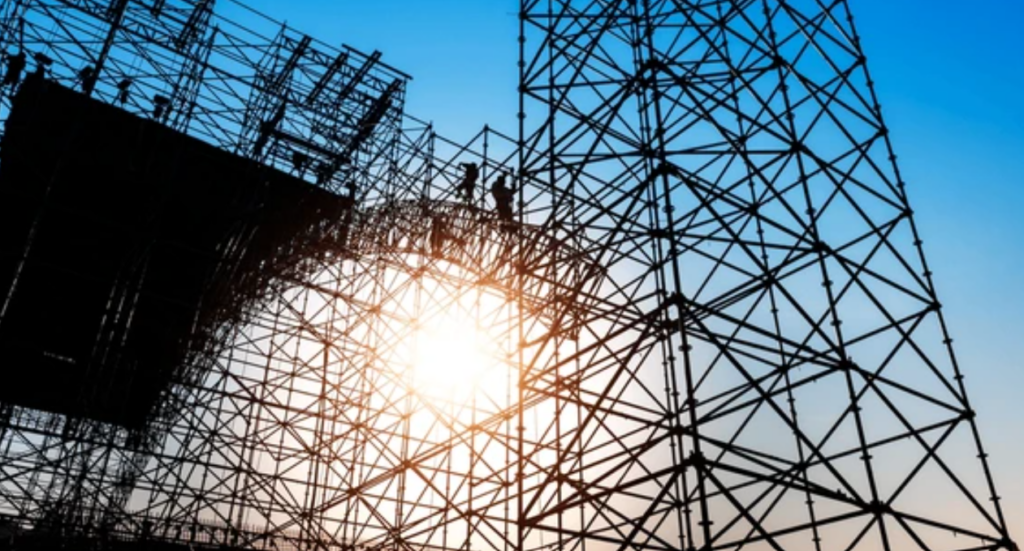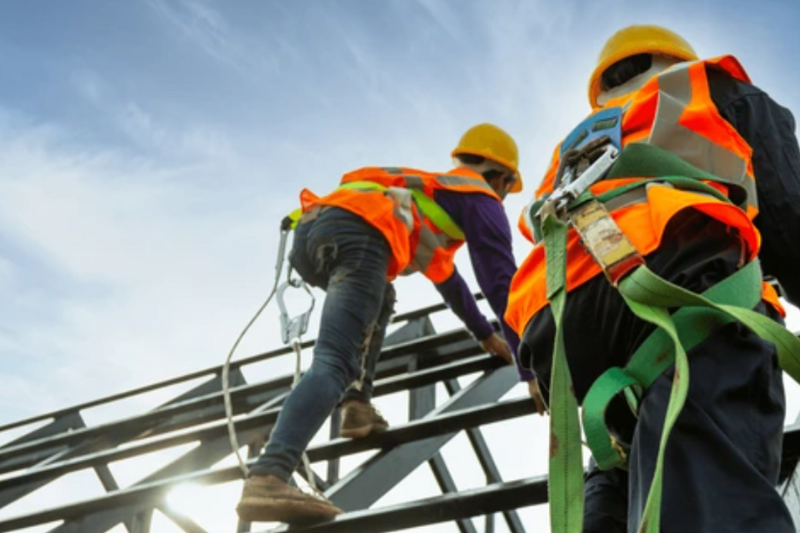What is Scaffolding? Types & Benefits
Scaffolding is a temporary structure used to support workers and materials during the construction, repair, or maintenance of buildings and infrastructure. It provides safe access to elevated areas, ensures compliance with safety standards, and improves project efficiency.
In Singapore, scaffolding is a core requirement across building projects, from high-rise developments to industrial maintenance. At The Monster Builder, a Unistrut channel supplier in Singapore, we also provide essential fabrication services to support safe and reliable scaffolding system.

Why is Scaffolding Important?
Scaffolding serves several essential purposes on construction sites:
- Worker safety: Stable platforms, guardrails, and non-slip surfaces reduce fall risks.
- Accessibility: Provides access to high or complex areas of a building.
- Efficiency: Allows workers to move faster and transport tools/materials easily.
- Material handling: Supports loads near the work zone, reducing downtime.
- Compliance: Meets Singapore’s Workplace Safety and Health (WSH) regulations.
Types of Scaffolding in Construction
There are 8 main types of scaffolding widely used in construction projects:
1. Single Scaffolding (Bricklayer’s Scaffold)
Single scaffolding, or putlog scaffold, is one of the oldest types, mainly used for brick masonry.
Key Components:
- Standards: Vertical supports placed 2–2.5 m from the wall.
- Ledgers: Horizontal tubes connecting standards at 1.2–1.5 m intervals.
- Putlogs: One end inserted into wall holes, the other resting on ledgers to hold platforms.
- Braces & base plates: Provide stability and ground load distribution.
Now less common in Singapore high-rise work, mainly used for minor masonry or restoration projects. Safer alternatives like steel scaffolding are preferred.
2. Double Scaffolding (Mason’s Scaffold)
Double scaffolding is designed for stone masonry, where putlog holes can’t be drilled. Used in projects requiring durable external support where drilling walls is impractical.
Key Components:
- Two rows of standards: First row 20–30 cm from the wall, second ~1 m away.
- Ledgers & putlogs: Create platforms without relying on wall holes.
- Bracing: Essential to maintain rigidity.
3. Cantilever Scaffolding (Needle Scaffold)
Cantilever Scaffolding built where ground access is restricted (e.g., busy streets, riversides). Rarely used in Singapore, only in urban or constrained sites where ground scaffolding isn’t possible.
Key Components:
- Needles (cantilever beams): Projected out from building openings to support standards.
- Standards & ledgers: Fixed on needles rather than ground.
4. Suspended Scaffolding
Platforms hung from the roof using ropes, chains, or wires, adjustable by pulleys or motors. In Singapore, it is very common in high-rise façade maintenance under MOM WSH supervision.
5. Trestle Scaffolding
Trestle scaffolding is supported on movable ladders or tripods, used indoors for low-height work. Mainly used in painting, plastering, and fit-out works inside buildings.
Key Features:
- Height usually under 5 m.
- Lightweight, portable, easy to set up.
6. Steel Scaffolding
Built with steel tubes and couplers, secured on base plates. The most widely used type in Singapore due to safety compliance and reusability. Often integrated with steel fabrication for custom parts.
7. Patented Scaffolding
Prefabricated frames with special couplings and working platforms. Ideal for short-term projects and smaller contractors seeking faster setups.
8. Kwikstage / Modular Scaffolding
A modern modular system widely adopted in Singapore. It is favored in high-rise, industrial, and large-scale projects, aligned with MOM standards.
Key Features:
- Uses prefabricated components with wedge or locking systems.
- Highly versatile for complex structures.
In some Asian regions like Hong Kong, bamboo scaffolding is still used, but Singapore’s industry relies on steel and modular systems for safety compliance.

Benefits Scaffolding
Scaffolding plays a vital role in construction projects by improving safety, accessibility, and efficiency for workers at height. A well-designed scaffolding system not only prevents accidents but also speeds up project timelines and ensures compliance with Singapore’s strict workplace safety standards.
Key benefits include:
- Enhanced safety – Guardrails, non-slip platforms, and stable support reduce risks.
- Greater efficiency – Workers move easily across platforms, boosting productivity.
- Improved accessibility – Provides secure access to difficult or elevated areas.
- Durability & reusability – Especially with steel scaffolding, lowering long-term costs.
- Versatility – Adaptable for construction, repair, or maintenance projects.
- Regulatory compliance – Meets MOM Workplace Safety and Health (WSH) requirements in Singapore.
How It Connects with Fabrication and Engineering
Scaffolding is more than just poles and platforms. It relies on a network of engineered components and fabricated parts that ensure stability, strength, and worker safety. For example, many scaffolding frames are built through steel fabrication, while lighter accessories such as guardrails or panels may involve aluminium sheet fabrication.
Precision matters too. Connectors, couplers, and safety locks often require the accuracy of CNC machining to achieve proper fit and load-bearing strength.
In modern projects, new technologies also play a role. 3D printing is increasing used to prototype custom parts before full production. While plastic injection molding makes it possible to produce safety clips end caps in bulk.
In this way, scaffolding and fabrication are deeply interconnected. Each relies on the other to deliver safe, adaptable, and efficient systems for construction projects in Singapore.
Conclusion
Scaffolding is the foundation of safe and efficient construction. From single to modular systems, choosing the right scaffolding ensures worker safety, productivity, and compliance with regulations.
At The Monster Builder, we support the industry with fabrication, machining, and advanced prototyping services. Whether it’s scaffolding platforms with chequered plates or modular steel structures, our solutions help Singapore’s construction projects succeed.



